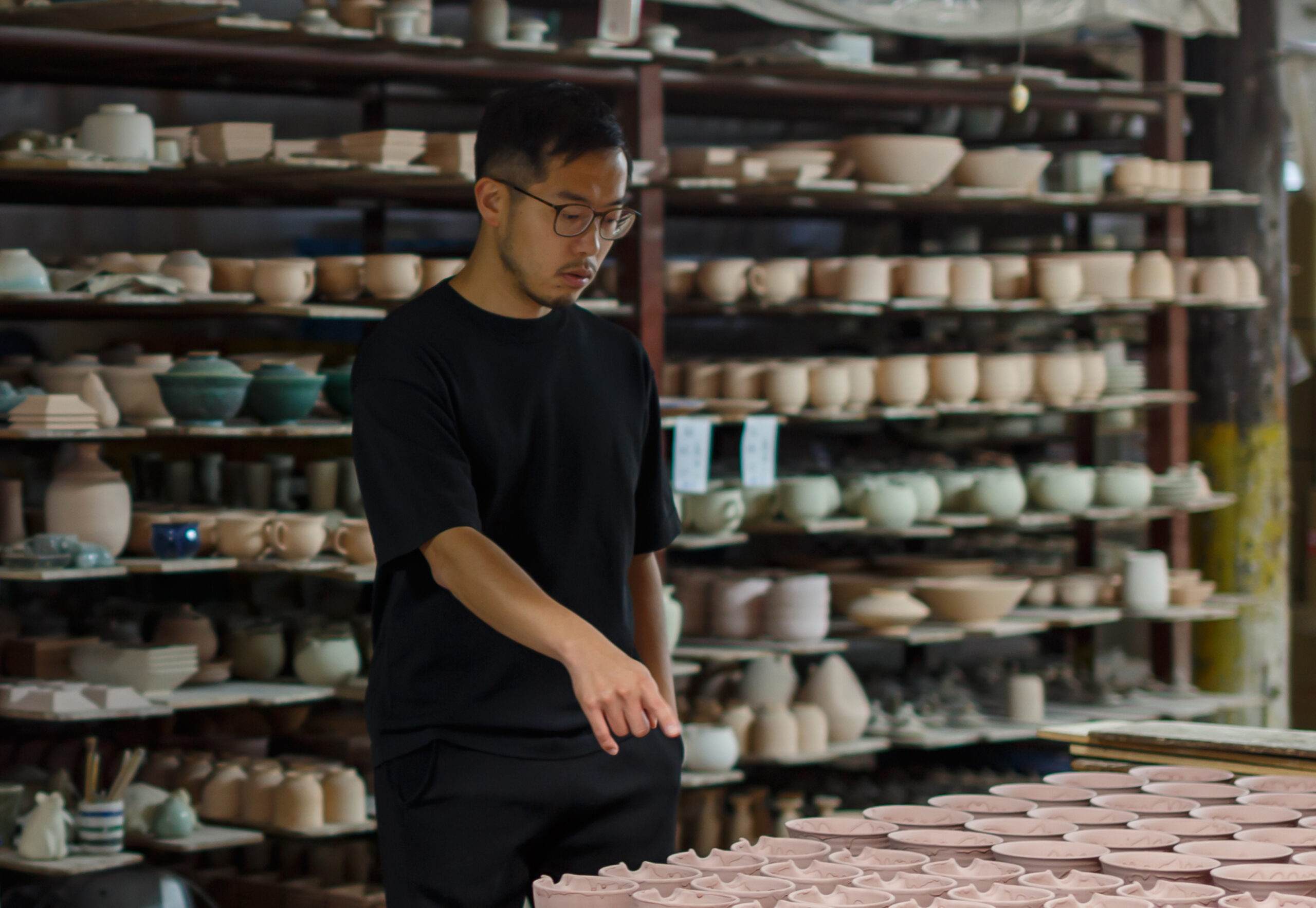- As the initiator of this project, a design engineer, and the founder of Tangent—a brand intertwining technology with design—how do you aim to bridge the gap between modern technology and the traditional craft of Aizu Hongo Yaki in this collaboration?
It wasn’t easy to contemplate how I could introduce a new perspective to pottery, especially from the standpoint of technology. In a way, this brought to mind the ambition inherent in the concept of merging traditional craft with technology. I chose an approach that involved not prioritizing technology initially, instead focusing on generating several unique ideas from a non-ceramicist point of view. Myself and the craftspeople engaged in numerous experiments to test these ideas, determining what worked and what didn’t. This process naturally led to a fusion of my expertise in modern processes of making and their handcrafting skills. It wasn’t a case of high-tech elements transforming pottery, but rather a harmonious convergence of the contemporary and traditional.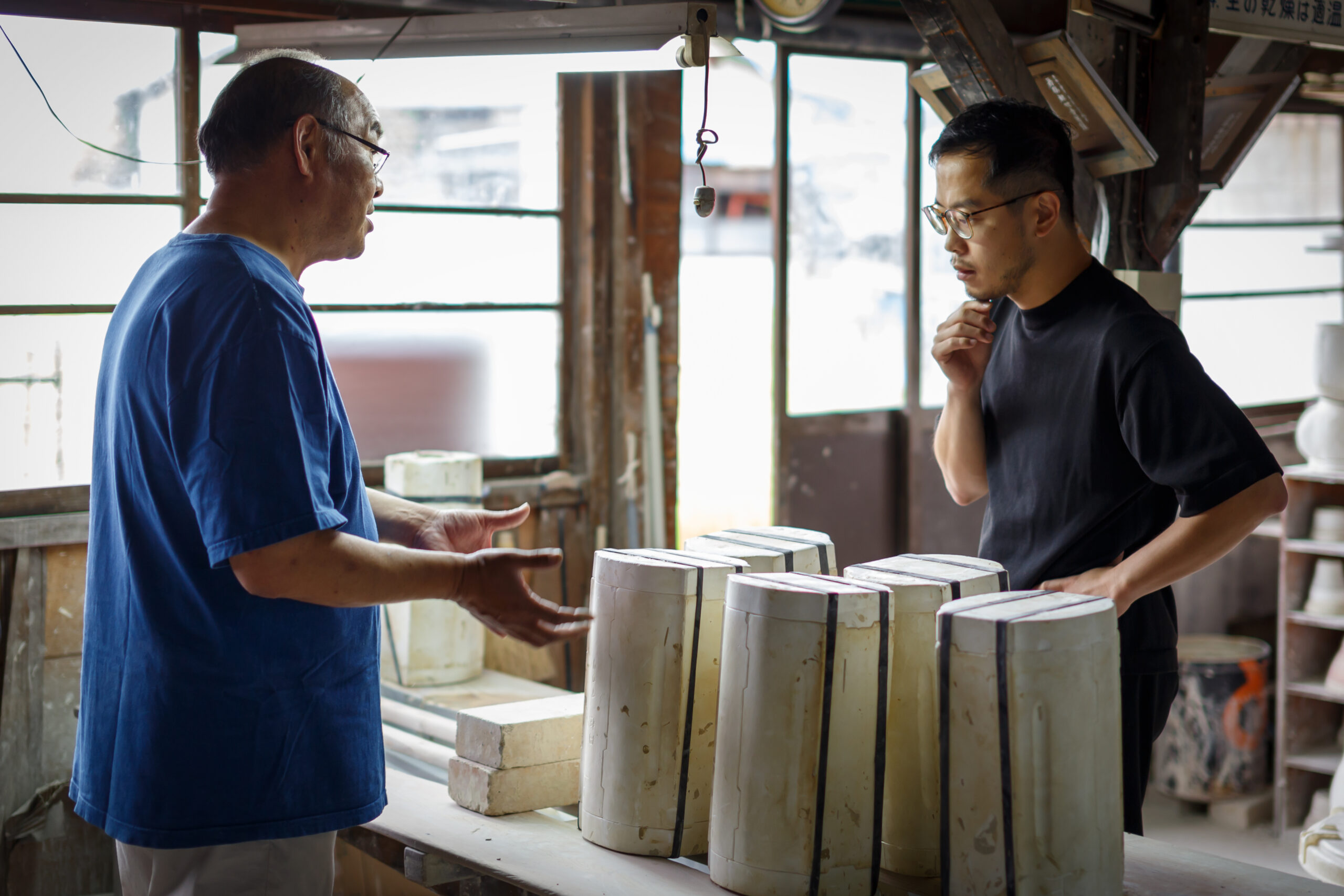
- How does the concept of ‘new, familiar, luxurious’ from Tangent align with the principles and artistry of Aizu Hongo Yaki, and how do you envision expressing this through your collaborative project?
The name of my company, Tangent, is derived from a tangent line that touches a curve only at one point. While it may appear as a subtle interaction, this point of contact can have a powerful influence. Additionally, a common tangent can connect two curves with a single line. To me, this signifies the bridging of multiple different elements, and our project literally bridges two distinct aspects — contemporary and traditional, machine-made and hand-crafted, Japan and Europe, etc. I believe that new ideas can emerge from such interactions.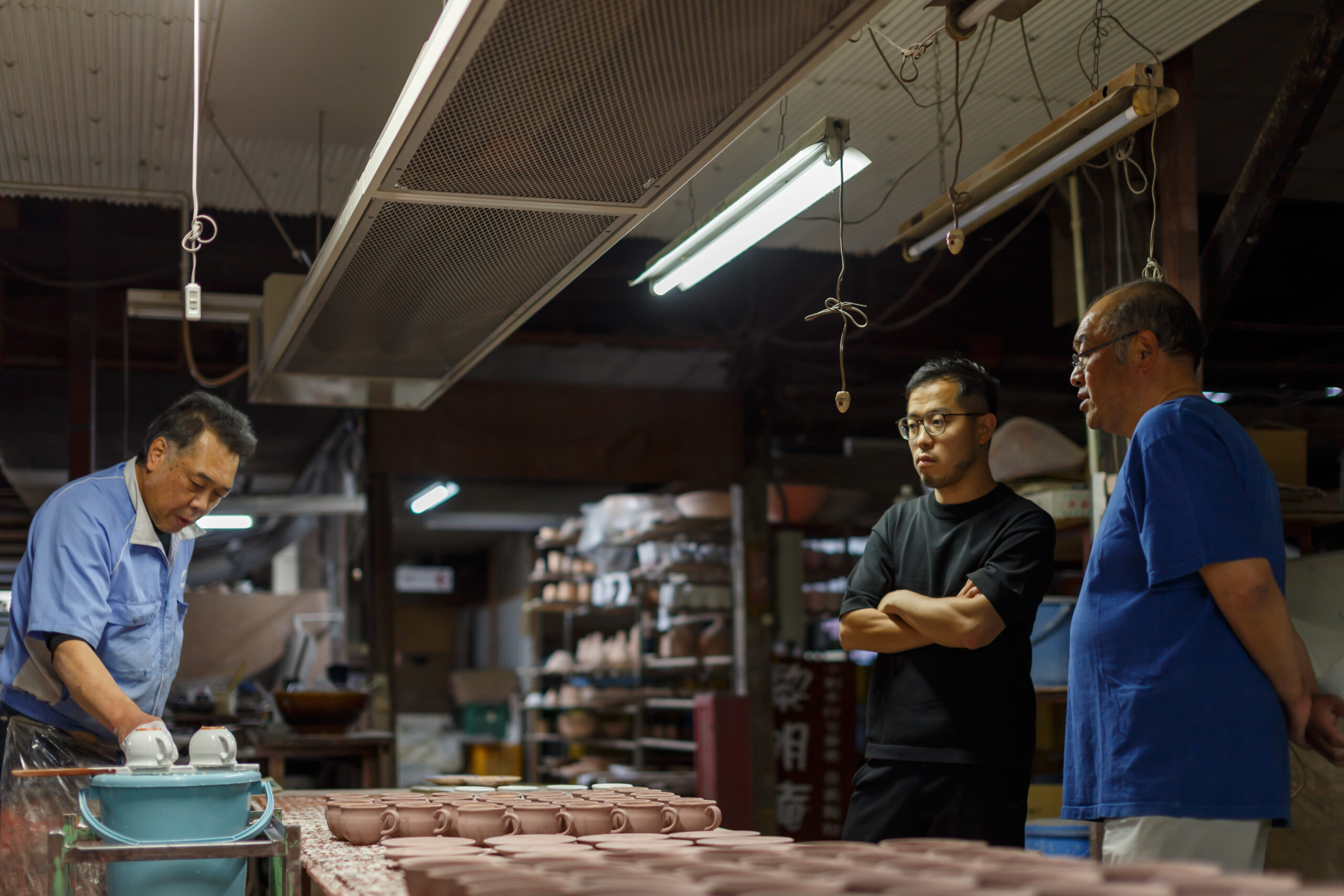
- Could you elaborate on the unique ideas or technological integrations you’re exploring to enhance Aizu Hongo Yaki, and how do these innovations maintain the essence of the traditional craft?
The fundamental idea is to create a precisely calculated 3D geometrical body using ceramics. My method involves making modules, each of which holds a ceramic tile within a metal base. The beautiful surface of the pottery with glaze is embraced within the metal structure, and the entire composition becomes a unique sculptural body.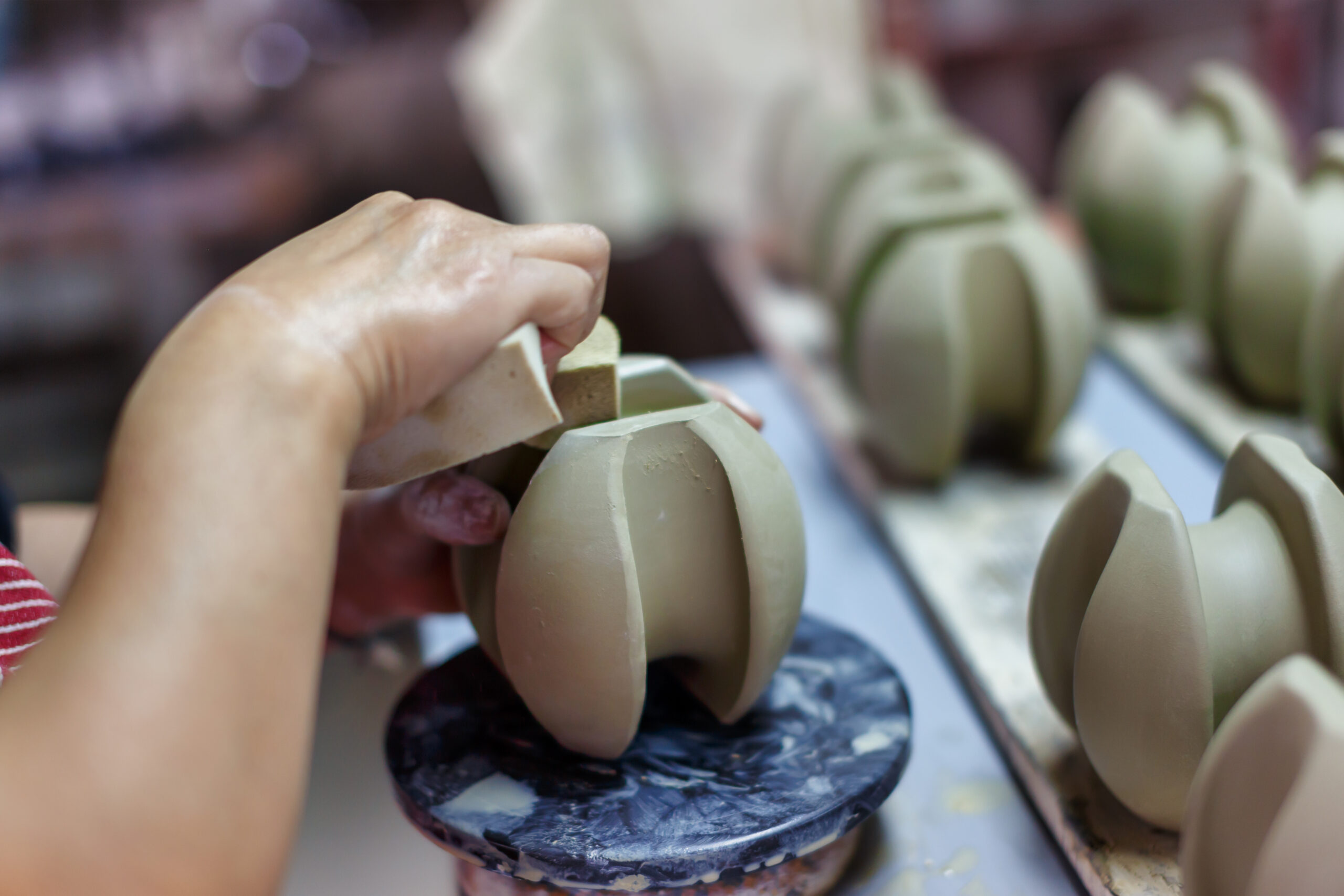
- What unexpected challenges or moments of revelation have you encountered while combining modern technological advancements with the time-honored methods of Aizu Hongo Yaki during this collaboration?
The pottery crafting process is genuinely an interaction with the material, and it demands special attention when integrated with a different process, such as machining metal. For instance, ceramics shrink during firing, necessitating consideration of this factor when designing the metal parts.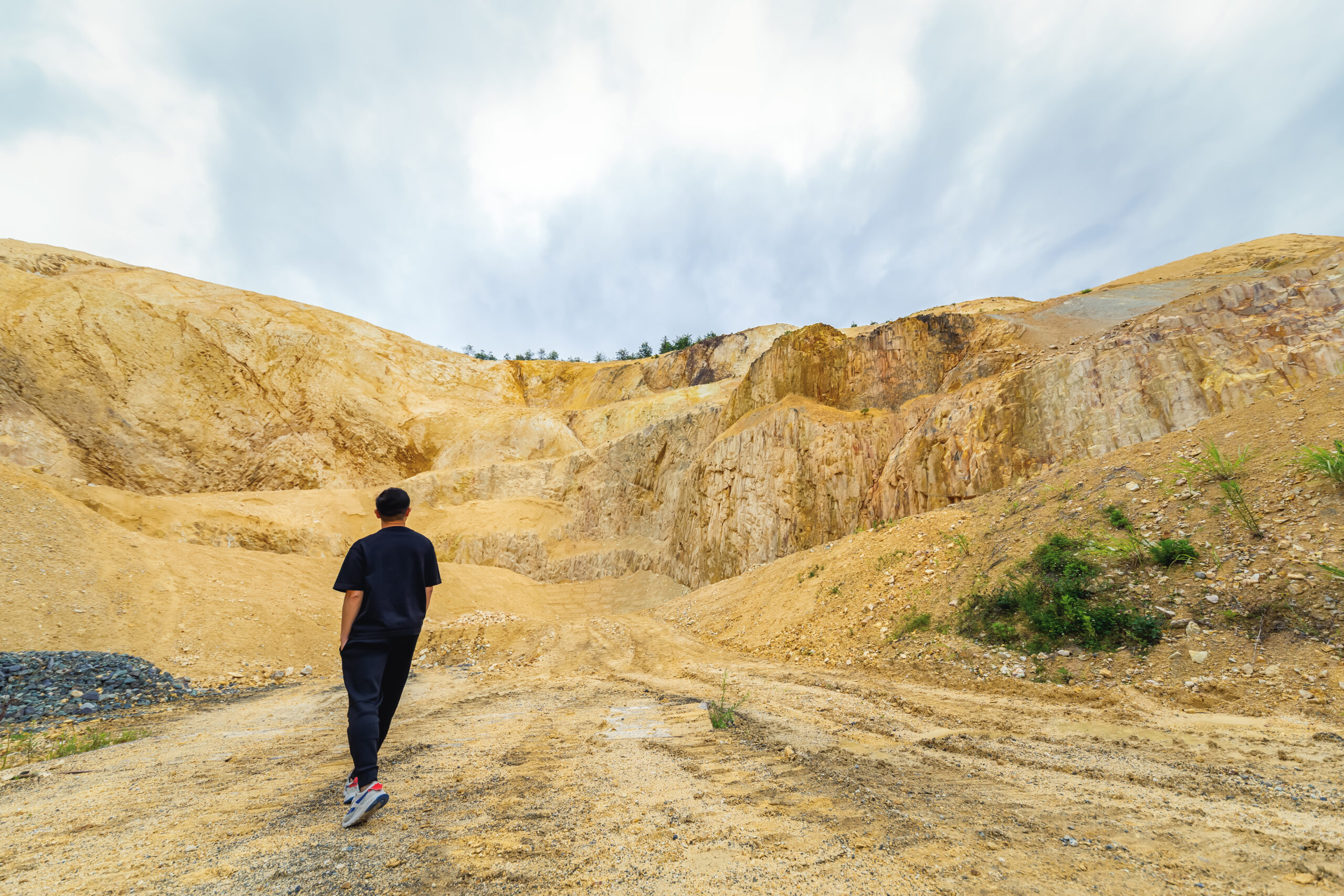
- Do you foresee this project impacting your future works or creative endeavors?
The convergence of two entirely different elements always inspires unique creations, and this is the primary motivation that propelled me to initiate this entire project. For me, it is also a process of rediscovering the heritage of my own country, filled with surprises and new findings. As a Japanese creator, it is a great gift that I can work with such treasures of my own culture. This will undoubtedly remain one of the core concepts guiding my creations throughout my entire life.
